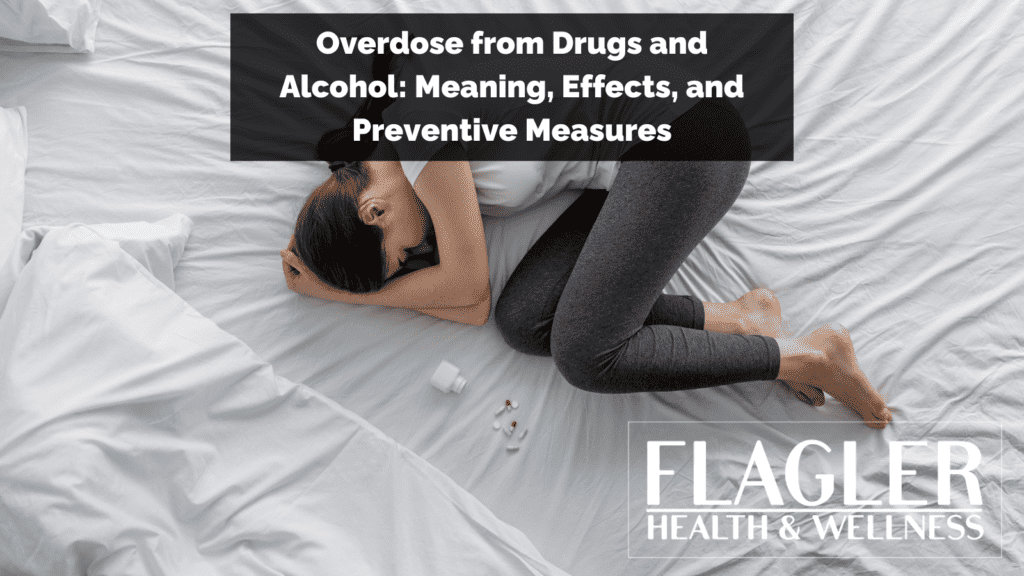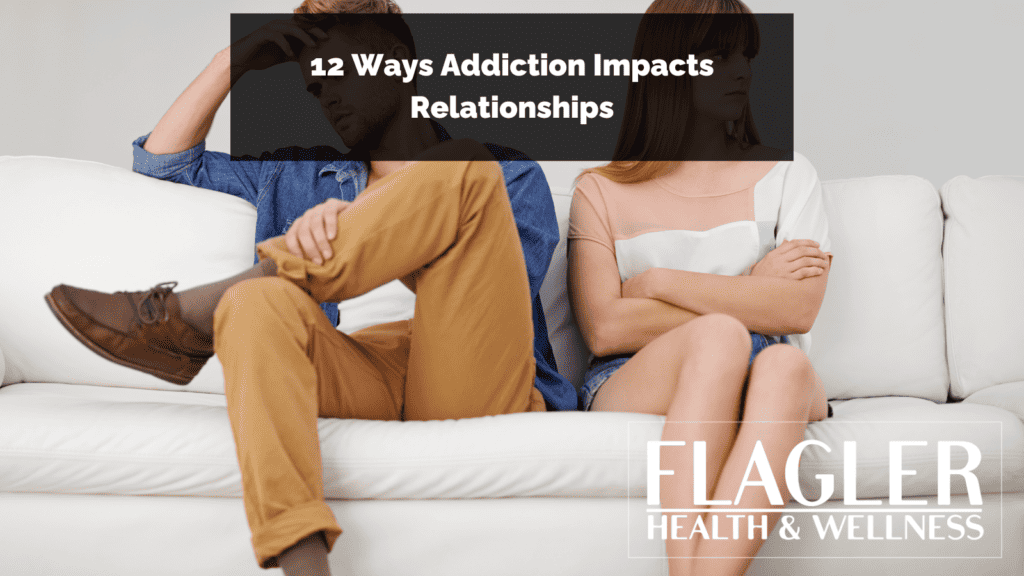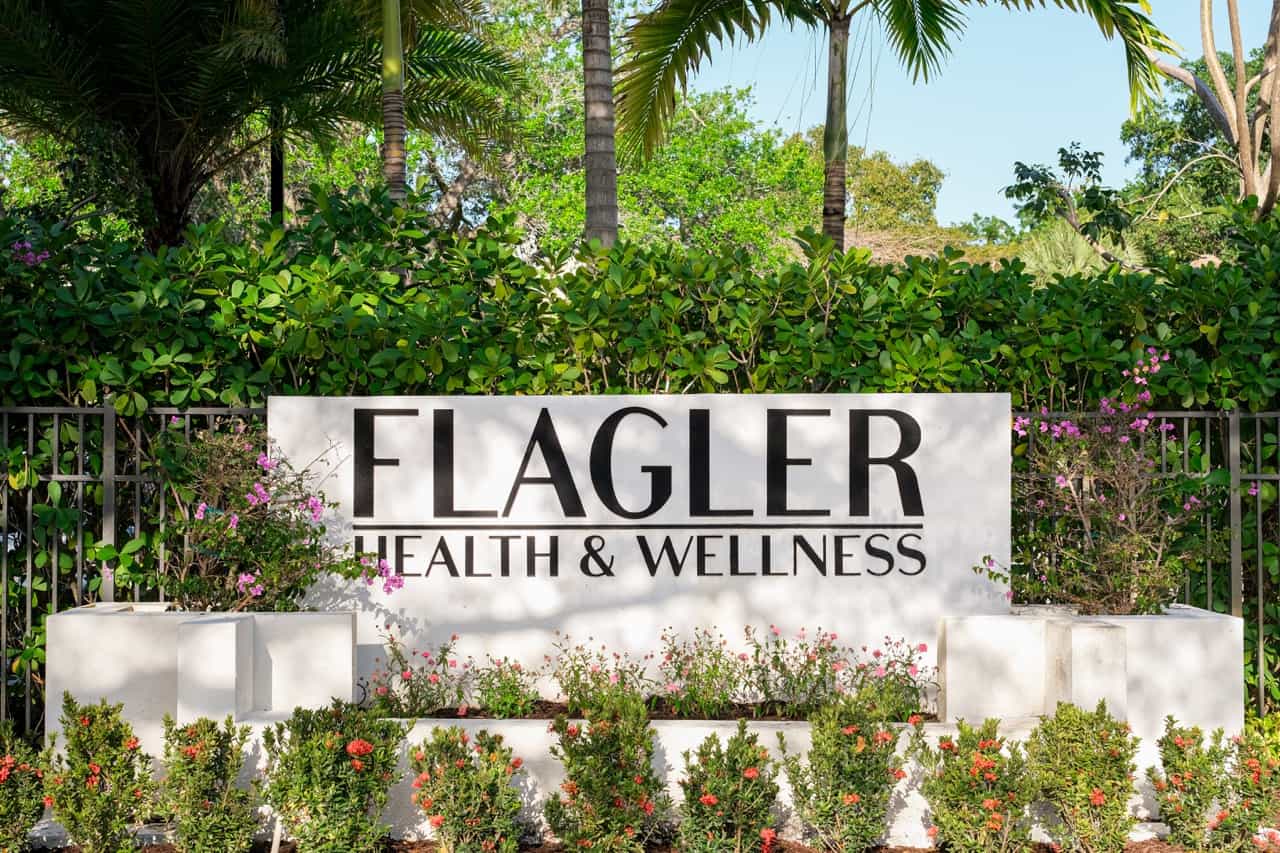An overdose occurs when a person consumes a toxic amount of a substance, or a combination of substances, that overwhelms the body’s ability to process and eliminate them. ]
The effects of overdose on drugs include mental problems, family and relationship issues and severe health complications, including death.
The substances involved in overdose can range from prescription medications and illicit drugs like heroin to alcohol, each carrying its unique risks and potential for harm.
Understanding Drug and Alcohol Overdose
An overdose signifies the body’s inability to manage the quantity of drugs or alcohol ingested, leading to potentially life threatening symptoms, or even death. This can happen accidentally, such as when individuals unknowingly take a higher dose of their prescription medication, or intentionally, in cases of substance abuse. The risk of overdose varies depending on the substance, the amount consumed, the user’s tolerance, and their overall health. Understanding these variables is the first step in recognizing and responding to overdose situations.
Overdose deaths have surged in recent years, pointing to a growing public health crisis. The increase is largely attributed to the country-wide rise in opioid use, including prescription pain relievers, heroin, and synthetic opioids like fentanyl. The prevalence of opioid drug use underscores the importance of understanding the signs of an overdose, such as extreme drowsiness, unresponsiveness, slow or irregular breathing, and cold or clammy skin, as early recognition can be crucial in saving lives.
According to the National Institute on Drug Abuse (NIDA), alcohol and drugs affect the brain’s neurotransmitters, which can lead to intoxication and, at high enough levels, suppression of vital functions. For instance, opioids can significantly depress the respiratory system, leading to a lack of oxygen to the brain (hypoxia), potentially resulting in coma, permanent brain damage, or death.
Having the information and understanding necessary to get someone the help they need if they are struggling with substance abuse is a primary form of intervention.
Signs and Symptoms of Drug and Alcohol Overdose
The signs and symptoms of an overdose can vary widely depending on the type of substance involved. Recognizing these signs can potentially help save a life by taking the appropriate measures or receiving the right medical attention in time. Here’s a breakdown of signs of an overdose by common substances, informed by sources like the National Institute on Drug Abuse (NIDA) and the Centers for Disease Control and Prevention (CDC):
Opioids drugs such as Heroin, Morphine, Fentanyl:
- Shallow, slow, or stopped breathing
- Pinpoint pupils
- Unconsciousness or inability to wake up
- Limp body
- Pale, blue, or cold skin
Stimulants such as Cocaine and Methamphetamines:
- Agitation or paranoia
- Seizures
- Rapid or irregular heartbeat
- High body temperature
- Chest pain
Benzodiazepines and Barbiturates:
- Drowsiness or extreme sedation
- Confusion and disorientation
- Diminished reflexes
- Respiratory depression
- Coma
Alcohol:
- Confusion or stupor
- Vomiting
- Seizures
- Slow or irregular breathing
- Hypothermia
Prescription Painkillers such as Oxycodone and Hydrocodone:
- Similar to opioids, as they act on the same receptors in the brain
- Shallow breathing
- Small, pinpoint pupils
- Unconsciousness
- Slow heartbeat
Causes of Drug and Alcohol Overdose
Overdoses can occur for a variety of reasons, ranging from intentional misuse to accidental ingestion of substances. Here are some of the causes of drug and alcohol overdose:
- Increased Potency of Substances: The rise in the availability of high-potency substances like fentanyl, which can be mixed with other drugs, significantly raises the risk of overdose due to its powerful effect even in small quantities.
- Polydrug Use: Combining drugs, including the use of alcohol with other substances, can lead to unpredictable effects and increase the risk of overdose. The interaction between substances can exacerbate their effects, particularly on the respiratory and cardiovascular systems.
- Tolerance and Relapse: Individuals with a history of substance use may develop tolerance, requiring higher doses to achieve the desired effect. If they stop using the substance and then relapse, returning to the same amount they previously used can lead to overdose because their tolerance has decreased.
- Lack of Awareness: Unawareness of a substance’s strength, the potential for lethal interactions with other medications or alcohol, or not knowing the proper dosage can lead to accidental overdoses, especially in settings where substances are used recreationally.
- Mental Health Issues: People struggling with mental health issues, such as depression or anxiety, may attempt to self-medicate with drugs or alcohol, increasing the risk of accidental or intentional overdose.
The Effects of Drug and Alcohol Overdose on the Body
The effects of an overdose on the body can be extensive and vary significantly depending on the type of drugs or alcohol involved, the amount taken, the individual’s physical condition, and other variables. Here is an expanded look into the immediate physical effects and long-term health consequences of an overdose:
Immediate Physical Effects
The immediate physical effects of an overdose can vary widely but often involve critical bodily systems. Symptoms may include severe respiratory depression, unconsciousness, seizures, and drastic changes in heart rate and blood pressure. These symptoms not only signify the acute toxicity of the overdose but also pose immediate risks of severe health outcomes or fatality if not promptly addressed.
- Respiratory Depression: A common and dangerous effect of opioid overdose, as noted by the National Institute on Drug Abuse (NIDA), is severe respiratory depression, where breathing becomes extremely slow or stops altogether, risking a fatal lack of oxygen to the brain.
- Cardiovascular Problems: Overdoses, especially from stimulants like cocaine or methamphetamine, can lead to acute cardiovascular issues, including heart attacks, arrhythmias, and hypertension.
- Seizures: The Substance Abuse and Mental Health Services Administration (SAMHSA) reports that overdoses from certain substances, including prescription medications and illicit drugs, can cause seizures, leading to potential brain injury or further complications.
- Gastrointestinal Distress: Overdosing on certain medications or substances can cause severe gastrointestinal problems, including nausea, vomiting, diarrhea, and abdominal pain.
- Loss of Consciousness: A common immediate effect of overdose is a loss or alteration of consciousness, ranging from drowsiness to coma, which can prevent the individual from seeking the medical help they need.
Long-term Health Consequences
Beyond the immediate dangers, surviving an overdose can have lingering health consequences. Depending on the severity and substances involved, individuals may face long-term effects such as cognitive impairments, organ damage (particularly to the liver and kidneys), and psychological disorders. These potentially severe consequences of substance use underscores the importance of addressing substance use disorders and ensuring access to medical and rehabilitative services for those affected.
- Cognitive Impairments: Survivors of an overdose, particularly those involving a loss of oxygen to the brain, may experience long-term cognitive effects, including memory loss, difficulty concentrating, and decreased cognitive function, as discussed in research studies cited by the National Institutes of Health (NIH).
- Organ Damage: Chronic substance abuse leading to repeated overdoses can cause long-term damage to vital organs, including liver failure from alcohol or acetaminophen overdose and kidney damage from NSAIDs or certain illicit drugs, as outlined by the American Liver Foundation and the National Kidney Foundation.
- Psychological Disorders: Overdose survivors often face psychological challenges or even mental health disorders, including depression, anxiety, and post-traumatic stress disorder (PTSD), as a result of their experiences and the ongoing struggle with substance use disorder.
- Neurological Damage: Prolonged oxygen deprivation during an overdose can result in permanent neurological damage, leading to conditions such as cerebral palsy or persistent vegetative state, based on case studies reviewed by the National Institute of Neurological Disorders and Stroke (NINDS).
What are the Prevention Strategies for Drug and Alcohol Overdose?
Preventing overdose requires a multifaceted approach that includes education, policy, and community support. Here are key prevention strategies for drug and alcohol overdose:
- Education and Awareness: Increasing public awareness about the risks of drug and alcohol use, including the dangers of overdose is a crucial first step. Providing targeted education on recognizing the signs of an overdose and how to respond effectively, including the administration of naloxone, a life-saving medication that can reverse opioid overdose effects will prepare people to take life saving measures in case of an overdose.
- Safe Prescribing Practices: Encouraging healthcare providers to follow guidelines for safe prescribing of opioids and other potentially addictive medications can help minimize the risk of overdose. Implementing prescription drug monitoring programs (PDMPs) to track prescriptions and identify potential misuse or diversion of prescription medications is another step in the right direction.
- Access to Treatment: Expanding access to high-quality treatment for substance use disorders, including medication-assisted treatment (MAT) for opioid addiction for all individuals struggling with substance use, regardless of income. Supporting the integration of substance use disorder treatment into primary healthcare settings to facilitate early intervention will help save lives.
- Harm Reduction Services: Providing access to harm reduction services, such as syringe service programs (SSPs) and safe consumption spaces, to reduce the health risks associated with drug use can help reduce harm. Making naloxone widely available to the public, including drug users, their families, and first responders, will enable quick responses to opioid overdoses.
- Support and Recovery Services: Offering comprehensive support services, including mental health counseling, housing, and employment assistance, to address the underlying factors contributing to substance use and support recovery is an essential part of addressing substance use. Fostering community-based recovery programs and peer support groups to provide ongoing support for individuals in recovery will encourage sustainable recovery outcomes.
- Policy and Legislation: Advocating for policies that reduce the stigma associated with substance use disorder, making it easier for individuals to seek help is another important step. Supporting legislation that increases funding for addiction research, treatment, and harm reduction initiatives, is another way to make it easier for communities to effect change.
- Research and Surveillance: Conducting ongoing research to better understand the factors leading to overdose and to develop more effective prevention and treatment strategies can provide more practical steps to Enhance surveillance systems to monitor overdose trends and inform public health responses.
What are the Treatments for Drug and Alcohol Overdose?
The immediate treatment for overdose is to call for emergency medical intervention, to stabilize the person, and address any immediate life threatening symptoms. The medical intervention required will vary depending on the substance in question, the symptoms presented, and the severity of the situation. Here’s a closer look at how to treat an overdose:
- Stabilizing the Patient: The first step in treating an overdose involves stabilizing the patient’s vital signs. This may include ensuring the patient is breathing adequately, has a stable heart rate, and is maintaining sufficient blood pressure. In cases of severe respiratory depression, especially common with opioid overdoses, ventilatory support may be required.
- Administration of Antidotes: For certain types of overdose, specific antidotes can reverse the effects of the substance. Naloxone (Narcan), for example, is an opioid antagonist that can quickly reverse the effects of opioid overdose if administered in time. Similarly, benzodiazepine overdoses may be treated with flumazenil, although its use is more controversial due to the risk of seizures.
- Activated Charcoal: For some oral ingestions, activated charcoal may be used within a specific timeframe to absorb the substance and prevent further absorption into the bloodstream. Its effectiveness depends on the substance ingested and the timing of administration.
- Supportive Care: Providing supportive care is crucial. This can include administering fluids to prevent dehydration, treating seizures with appropriate medications, and addressing any complications that arise as a result of the overdose, such as organ failure.
- Detoxification: Once the immediate threat to life has been addressed, the process of detoxification can begin, if appropriate. This process involves allowing the body to rid itself of the substance under medical supervision, sometimes with the support of medication to manage withdrawal symptoms.
- Long-term Treatment and Rehabilitation: Addressing the underlying issues that led to the overdose is critical for preventing future occurrences. This may involve substance use disorder treatment, including behavioral therapies, counseling, medication-assisted treatment (MAT), and support groups. Mental health treatment for co-occurring disorders may also be necessary.
- Prevention Education: After an overdose, individuals should receive education on overdose prevention, the dangers of the substance they overdosed on, and the importance of adhering to prescribed medication dosages.
- Community Naloxone Programs: Increasing access to naloxone for people who use opioids and their families, as well as training on how to use it, can save lives by reversing opioid overdoses before emergency medical help arrives.
The treatment for an overdose requires a coordinated effort from emergency medical services, healthcare providers, and potentially mental health professionals. Comprehensive care doesn’t end with stabilizing the patient; it must also address the psychological and social factors contributing to substance abuse to prevent future overdoses.
What should I do if I suspect someone is overdosing?
Call 911 and try to keep the person awake and breathing, and stay with them until help arrives. Lay them on their side to prevent choking and administer naloxone if trained and available.
How can I tell if someone is overdosing on drugs or alcohol?
Signs of an overdose include difficulty waking up, slow or absent breathing, irregular heartbeat, cool or clammy skin with a bluish tint, and symptoms like seizures, muscle spasms, disorientation, or confusion.
How can overdoses be prevented?
Prevention involves educating yourself and others about overdose risks and signs, supporting substance use disorder treatment, and participating in community prevention programs.
How We Can Help You
No matter what challenge you are facing, recognizing the need for help is the first step on the road to recovery. The second is to find the right treatment program for your needs. At Flagler, we offer specialized programs that are tailored to an individual’s needs, ensuring the highest chance of your success. Remember, seeking help is not a sign of weakness, but rather one of strength and self-awareness. Reach out to us today to see how we can help you on your journey to a brighter, substance-free future.
Share This Post







